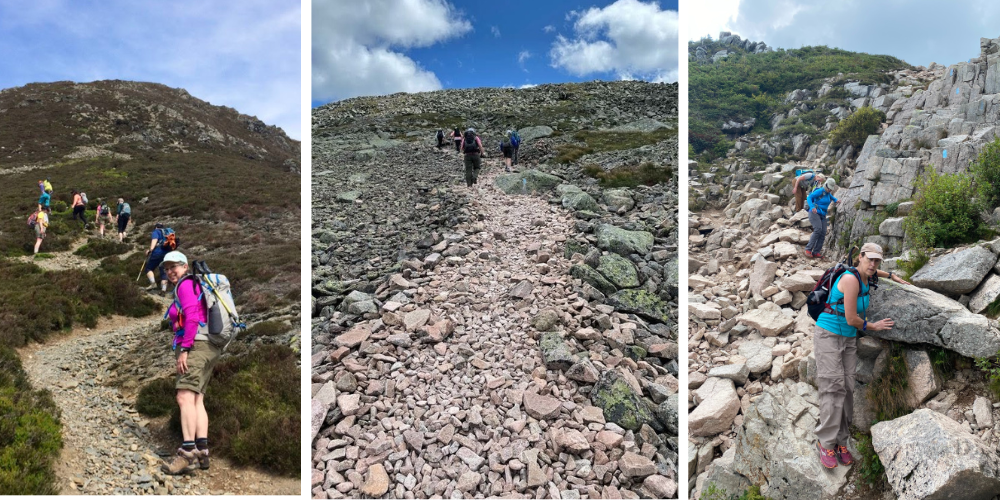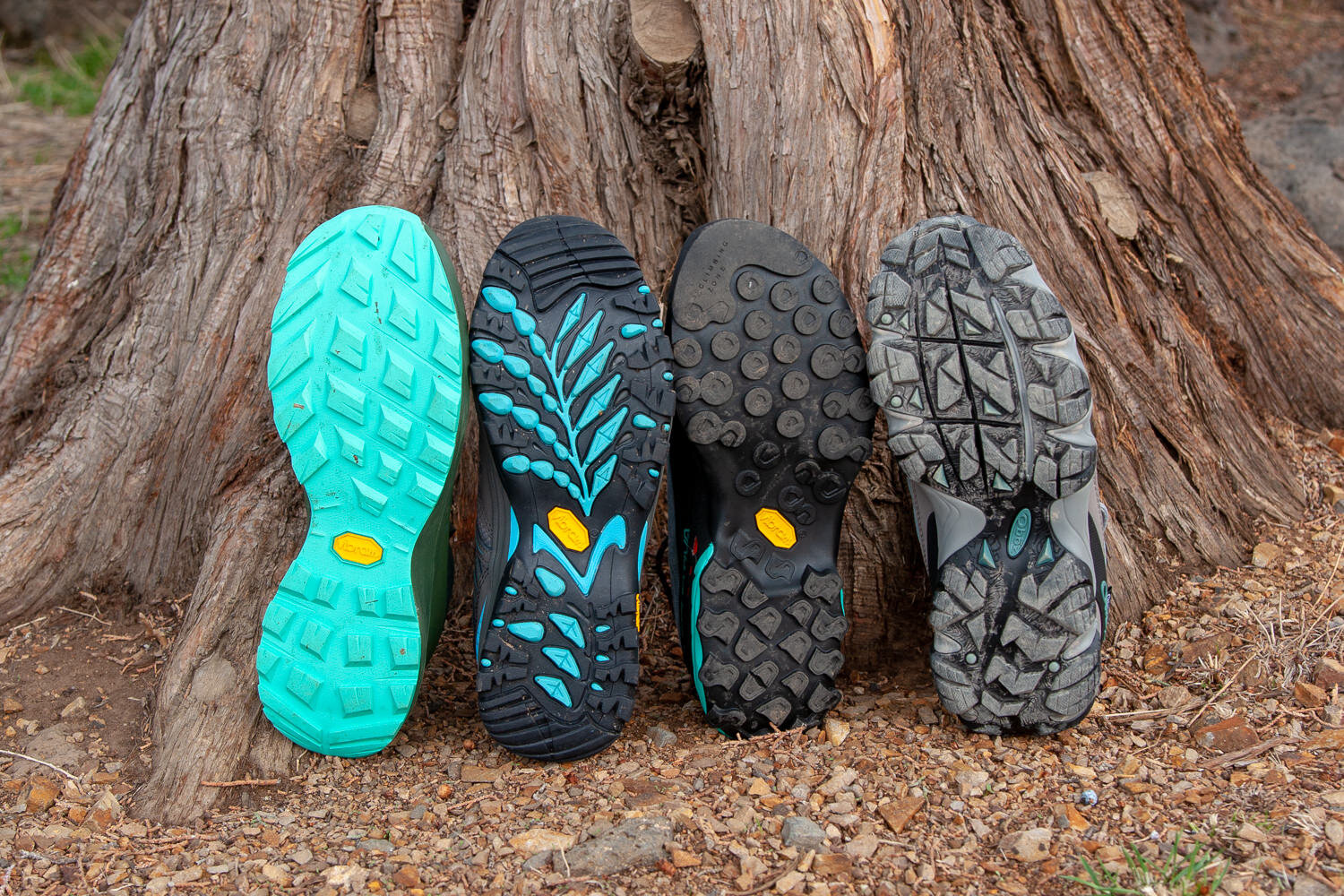How to Choose the Right Women's Hiking Shoes

Finding the perfect pair of women’s hiking shoes is essential for comfort, performance, and protection on the trail. Whether you’re tackling rugged mountain paths or strolling through scenic trails, your shoes can make or break your hiking experience. This guide will help you navigate the key factors to consider when selecting the right hiking shoes for your needs.
1. Consider the Type of Terrain

The terrain you plan to hike on plays a major role in the type of shoe you need.
- Well-Groomed Trails → Opt for lightweight, breathable hiking shoes.
- Rocky, Uneven Terrain → Choose sturdy shoes with excellent traction and support.
- Wet or Snowy Conditions → Waterproof hiking shoes with good grip are best.
- Multi-Day Treks → Go for shoes with extra cushioning and durability.
2. Waterproof vs. Breathable: Which is Right for You?
|
Feature |
Waterproof Hiking Shoes |
Breathable Hiking Shoes |
|
Protection |
Shields against rain, mud, and wet conditions |
Provides airflow and quick drying |
|
Best For |
Wet, cold, or unpredictable weather |
Dry, warm climates and summer hikes |
|
Weight |
Slightly heavier due to waterproof membrane |
Lighter and more flexible |
Choose waterproof shoes if you hike in rainy, muddy, or snowy conditions.
Choose breathable shoes for hot, dry climates where ventilation matters.
Read More: Waterproof vs. Breathable Hiking Shoes
3. Find the Right Fit

Wearing the wrong size can cause blisters, discomfort, and foot pain. Follow these steps to get the perfect fit:
- Try shoes on in the afternoon (feet swell throughout the day).
- Wear hiking socks when trying on shoes.
- Leave a thumb’s width of space at the toe to prevent toe banging on descents.
- Ensure a snug fit at the heel to prevent slipping.
Tip: If you have wide feet, look for brands that offer wide sizes, like Keen and Merrell.
4. Cushioning & Support
Comfort and support vary depending on the shoe’s midsole and cushioning.
- Minimal Cushioning: Ideal for short hikes and lightweight backpacking.
- Medium Cushioning: Great for all-purpose hiking and day hikes.
- Maximum Cushioning: Best for long treks, heavy backpacks, and rocky terrain.
Need extra arch support? Consider insoles like Superfeet or Sole for added comfort.
5. Traction & Outsole Grip

A good hiking shoe should have a durable outsole with a solid grip. Look for:
- Deep lugs (4mm+) for strong traction on rough trails.
- Vibram or Contagrip soles for durability and slip resistance.
- Rubber toe caps for extra protection from rocks and roots.
Shop Hiking Shoes with Great Traction
6. Weight & Flexibility
- Lightweight Hiking Shoes: Best for fast hiking and day trips.
- Midweight Shoes: Balance of support and flexibility.
- Heavyweight Boots: Maximum support for tough, long hikes.
Tip: If you value speed and agility, consider trail running shoes as a lightweight alternative.
7. Breaking in Your Hiking Shoes
To avoid blisters, break in your new hiking shoes before hitting the trail:
- Wear them around the house for short periods.
- Take short walks on different surfaces.
- Gradually increase hiking distance over time.
Read More: How to Break in Hiking Shoes Without Blisters
FAQs About Choosing Women’s Hiking Shoes
What is the rule of thumb for hiking shoes?
The general rule of thumb is that your hiking shoes should fit snugly at the heel, with about a thumb’s width of space at the toe to prevent discomfort on descents.
Should you buy hiking shoes a size bigger?
Yes, many hikers opt for half a size to a full size bigger than their normal shoes to accommodate swelling that occurs during long hikes.
Should hiking shoes be looser or tighter?
Hiking shoes should be snug but not tight. Your heel should stay in place while walking, and your toes should have room to move without rubbing against the front.
What is the difference between hiking shoes and trekking shoes?
- Hiking shoes are lighter and designed for shorter hikes on well-maintained trails.
- Trekking shoes are more durable, with sturdier soles and better support for longer, more demanding hikes.
How do I know if my hiking shoes fit properly?
Your shoes should have a snug fit at the heel, with room in the toe box. You should be able to wiggle your toes without slipping inside the shoe.
What is the best brand for women's hiking shoes?
Top brands include Merrell, Salomon, Keen, Hoka, and Columbia—each offering great options for different hiking styles.
Are hiking boots better than hiking shoes?
Hiking boots provide more ankle support, while hiking shoes are lighter and more flexible. Choose based on your terrain and hiking style.
Can I wear running shoes for hiking?
Trail running shoes can work for easy trails, but they lack the durability and grip needed for rugged terrain.
How long do hiking shoes last?
On average, hiking shoes last 300-500 miles before they need replacing.
Final Thoughts: Picking the Best Women's Hiking Shoes
To choose the right pair:
- Consider your terrain and weather conditions
- Find a fit that offers comfort and support
- Look for durable soles with good traction
- Decide between waterproof vs. breathable materials
Need expert advice? Visit our store and try different options!



